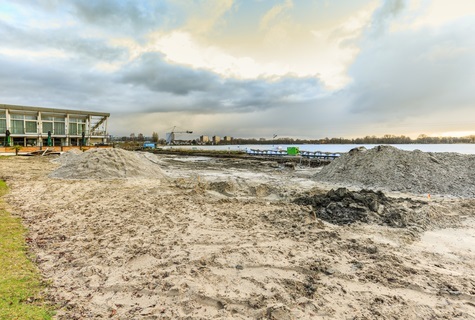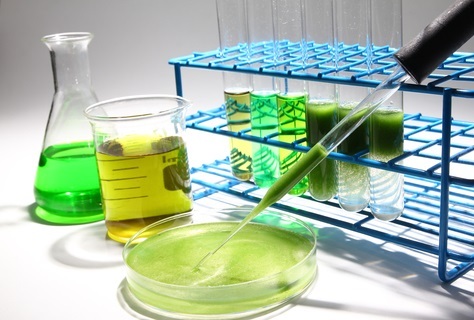
 Data Structure
Data Structure Networking
Networking RDBMS
RDBMS Operating System
Operating System Java
Java MS Excel
MS Excel iOS
iOS HTML
HTML CSS
CSS Android
Android Python
Python C Programming
C Programming C++
C++ C#
C# MongoDB
MongoDB MySQL
MySQL Javascript
Javascript PHP
PHP
- Selected Reading
- UPSC IAS Exams Notes
- Developer's Best Practices
- Questions and Answers
- Effective Resume Writing
- HR Interview Questions
- Computer Glossary
- Who is Who
Role of Biotechnology in Pollution Control
Introduction
In recent years, pollution has emerged as one of the most pressing global concerns. Pollution affects every aspect of our lives; from the air, we breathe to the water we drink. It is a complex problem that requires a multifaceted solution, and biotechnology has an important role to play in pollution control. Biotechnology is the application of biological processes and organisms to solve practical problems.
The content below emphasizes the role of biotechnology in pollution control and how it can be used to reduce the impact of pollution on the environment.
Bioremediation
One of the most important roles of biotechnology in pollution control is bioremediation. Bioremediation is the use of microorganisms, such as bacteria, fungi, and algae, to remove pollutants from the environment. Microorganisms have the ability to break down organic and inorganic compounds into harmless byproducts, and they can be used to clean up contaminated soil, water, and air.
In soil bioremediation, microorganisms are used to break down organic pollutants, such as petroleum products and pesticides. The microorganisms convert the pollutants into harmless substances, such as carbon dioxide and water. In water bioremediation, microorganisms are used to break down organic and inorganic pollutants. They can also be used to remove nutrients, such as nitrogen and phosphorus, from wastewater, which can cause eutrophication if left untreated. In air bioremediation, microorganisms are used to remove volatile organic compounds (VOCs) from the air.
Bioremediation has several advantages over traditional remediation methods. It is cost-effective, environmentally friendly, and can be used to treat a wide range of pollutants. It also has the potential to be used in situ, which means that the contaminated site does not need to be excavated and transported to another location.

Phytoremediation
Another important role of biotechnology in pollution control is phytoremediation. Phytoremediation is the use of plants to remove pollutants from the environment. Plants have the ability to absorb and accumulate pollutants in their tissues, which can then be removed from the site. They can be used to clean up contaminated soil, water, and air.
In soil phytoremediation, plants are used to remove heavy metals, such as lead and mercury, from the soil. The plants absorb the heavy metals through their roots and accumulate them in their tissues. The plants can then be harvested and removed from the site, along with the pollutants. In water phytoremediation, plants are used to remove nutrients, such as nitrogen and phosphorus, from the water. They can also be used to remove organic and inorganic pollutants. In air phytoremediation, plants are used to remove VOCs from the air.
Phytoremediation has several advantages over traditional remediation methods. It is cost-effective, environmentally friendly, and can be used to treat a wide range of pollutants. It also has the potential to be used in situ, which means that the contaminated site does not need to be excavated and transported to another location.
Genetic Engineering
Genetic engineering is another important aspect of biotechnology that can be used in pollution control. Genetic engineering involves the manipulation of an organism's DNA to create new traits or modify existing ones. It can be used to create organisms that are more effective at removing pollutants from the environment.
For example, genetic engineering can be used to create bacteria that are more effective at breaking down organic pollutants. Scientists can introduce new genes into the bacteria that encode enzymes that break down specific pollutants.
For example, genetic engineering can be used to create bacteria that are more effective at breaking down organic pollutants. Scientists can introduce new genes into the bacteria that encode enzymes that break down specific pollutants.
Biofuels
Biotechnology can also be used to develop biofuels, which can help reduce pollution from fossil fuels. Biofuels are fuels made from renewable biological resources, such as crops, algae, and waste materials. They can be used to power vehicles, generate electricity, and heat homes and buildings.
Biofuels are less polluting than fossil fuels because they produce fewer emissions of greenhouse gases, such as carbon dioxide. They can also be produced locally, which reduces the need for long-distance transportation and associated pollution.
However, the production of biofuels also has potential environmental impacts, such as land use changes, water use, and the displacement of food crops. It is important to carefully evaluate the sustainability of biofuel production and use to ensure that they provide a net benefit for the environment.

Bioplastics
Biotechnology can also be used to develop bioplastics, which are plastics made from renewable biological resources. Bioplastics can help reduce pollution from conventional plastics, which are made from non-renewable fossil fuels and can persist in the environment for hundreds of years.
Bioplastics can be made from a variety of renewable resources, such as corn, sugarcane, and algae. They can be used in a wide range of applications, from packaging to automotive parts. Bioplastics can also be designed to biodegrade in the environment, reducing the impact of plastic pollution.
However, the production of bioplastics also has potential environmental impacts, such as land use changes, water use, and the displacement of food crops. It is important to carefully evaluate the sustainability of bioplastic production and use to ensure that they provide a net benefit for the environment.

Conclusion
In conclusion, biotechnology has an important role to play in pollution control. Bioremediation and phytoremediation can be used to clean up contaminated sites, genetic engineering can be used to create organisms that are more effective at removing pollutants, biofuels can help reduce pollution from fossil fuels, and bioplastics can help reduce pollution from conventional plastics.
However, it is important to carefully evaluate the potential risks and benefits of biotechnology applications in pollution control and to ensure that they provide a net benefit for the environment. By using biotechnology in a sustainable and responsible manner, we can help reduce the impact of pollution on our planet.

